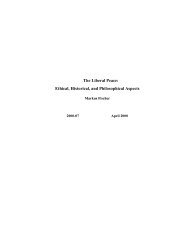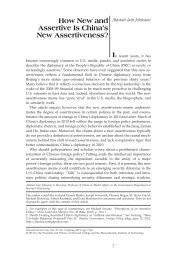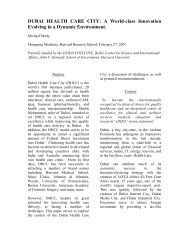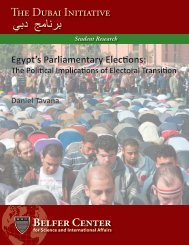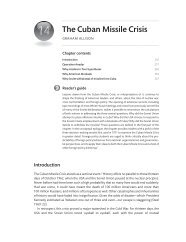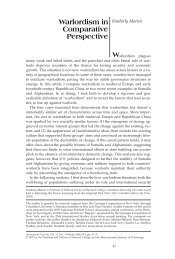The Promise and Problems of Pricing Carbon: - Belfer Center for ...
The Promise and Problems of Pricing Carbon: - Belfer Center for ...
The Promise and Problems of Pricing Carbon: - Belfer Center for ...
Create successful ePaper yourself
Turn your PDF publications into a flip-book with our unique Google optimized e-Paper software.
THE PROMISE AND PROBLEMS OF PRICING CARBON BELFER CENTER 2011-12<br />
carbon tax – increases the likelihood that firms will comply with their obligations <strong>and</strong> can<br />
facilitate a country’s participation <strong>and</strong> compliance in a global climate agreement.<br />
In a similar fashion as under a carbon tax, domestic cap-<strong>and</strong>-trade programs could<br />
include some variant <strong>of</strong> a border tax to mitigate some <strong>of</strong> the adverse competitiveness impacts <strong>of</strong><br />
a unilateral domestic climate policy <strong>and</strong> encourage trade partners to take on mitigation policies<br />
with comparable stringency. In the case <strong>of</strong> a cap-<strong>and</strong>-trade regime, the border adjustment would<br />
take the <strong>for</strong>m <strong>of</strong> an import allowance requirement, so that imports would face the same<br />
regulatory costs as domestically-produced goods. However, border measures under a carbon tax<br />
or cap-<strong>and</strong>-trade raise questions about the application <strong>of</strong> trade sanctions to encourage broader<br />
<strong>and</strong> more extensive emission mitigation actions globally, as well as questions about their legality<br />
under the World Trade Organization (Brainard <strong>and</strong> Sorking, 2009; Frankel, 2010).<br />
Emission-Reduction-Credit Systems<br />
An emission-reduction-credit (ERC) system delivers emission mitigation by awarding<br />
tradable credits <strong>for</strong> “certified” reductions. Generally, firms that are not covered by some set <strong>of</strong><br />
regulations – be they comm<strong>and</strong>-<strong>and</strong>-control or market-based – may voluntarily participate in<br />
such systems, which serve as a source <strong>of</strong> credits that entities facing compliance obligations under<br />
the regulations may use.<br />
For example, as we discuss below, the Clean Development Mechanism (CDM) under the<br />
Kyoto Protocol provides credits used by firms covered by the EU ETS. A firm earns credits <strong>for</strong><br />
projects that reduce emissions relative to a hypothetical “no project” baseline. In determining<br />
the number <strong>of</strong> credits to grant a firm <strong>for</strong> a project, calculation <strong>of</strong> the appropriate baseline is<br />
there<strong>for</strong>e as important as measuring emissions. Dealing with this unobserved <strong>and</strong> fundamentally<br />
unobservable hypothetical baseline is at the heart <strong>of</strong> the so-called ”additionality” problem.<br />
While ERC systems can be self-st<strong>and</strong>ing, as in the case <strong>of</strong> the CDM, governments can<br />
also establish them as elements <strong>of</strong> domestic cap-<strong>and</strong>-trade or other regulatory systems. <strong>The</strong>se<br />
ERC systems — <strong>of</strong>ten referred to as <strong>of</strong>fset programs — serve as a source <strong>of</strong> credits that can be<br />
used by regulated entities to meet compliance obligations under the primary system. For<br />
example, the Regional Greenhouse Gas Initiative (RGGI) in the northeast United States, which<br />
regulates CO2 emissions from electric power plants (<strong>and</strong> which we discuss below), recognizes<br />
<strong>of</strong>fsets from activities such as l<strong>and</strong>fill methane capture <strong>and</strong> destruction, reductions in emissions<br />
8





